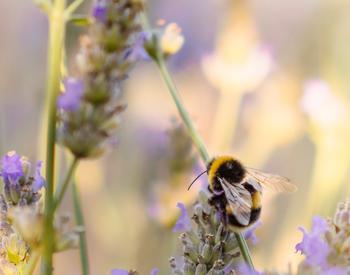Emerald green sweat bees like this Agapostemon texanus were seen collecting pollen from sagebrush mariposa lilies, Calochortus macrocarpus, that were blooming in mid-June on the lower John Day River. This striking bee, which has the largest range of any species in the genus, is found throughout the United States from sea level to about 8,000 feet but is most common on the West Coast.
The species can vary in color from metallic green to blue or purple, and there is significant variation in the extent of the black markings on its legs.
Although green sweat bees were the only bees seen on the mariposa lilies this day, Calochortus are pollinated by a wide diversity of insects, including bees, flies, wasps and beetles.
The Oregon Bee Atlas has documented more than 400 individual bees visiting Calochortus species around the state, and these records represent dozens of bee species. Dilley et al (2000) provide a really great introduction to Calochortus and their pollinators.
Reference
Dilley, J.D., P. Wilson, and M.R. Messler. 2000. The Radiation of Calochortus: Generalist flowers moving through a mosaic of potential pollinators — Oikos 89: 209-222.



















